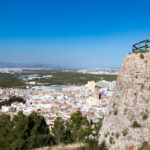Nestled on the eastern coast of Spain, the Costa Blanca is renowned for its picturesque Mediterranean coastline, charming towns, and year-round sunshine. While destinations like Alicante and Benidorm often steal the spotlight, there’s a lesser-known gem along this stretch of the Spanish coast – Oliva. This enchanting town combines a rich history, stunning beaches, and a tranquil atmosphere that makes it a hidden paradise for those seeking an authentic Spanish experience. In this article, we’ll embark on a journey to explore Oliva and discover why it’s a hidden gem on the Costa Blanca.
Oliva’s Enchanting History
Oliva boasts a history that dates back centuries, with influences from various cultures, including the Romans and Moors. Its name itself is derived from the Arabic word “Oliba,” which means “source of water” – a testament to the town’s ancient origins.
- 1.1. Roman Roots: The presence of the Romans in Oliva is evident through archaeological discoveries. The Roman villa of ‘El Poblet’ and other ruins stand as a reminder of this period.
- 1.2. Moorish Influence: Oliva was under Moorish rule for many years, and this influence is still palpable in the town’s architecture, including the stunning Moorish-inspired facades of some buildings.
The Allure of Oliva’s Beaches
One of Oliva’s main draws is its 10 kilometers of pristine coastline. These sandy shores are characterized by their natural beauty and remain remarkably untouched compared to more popular beach destinations on the Costa Blanca.
- 2.1. Playa de Oliva: The town’s main beach, Playa de Oliva, offers golden sands and crystal-clear waters, making it perfect for swimming, sunbathing, and water sports.
- 2.2. Playa de Pau-Pi: Just a short walk from Playa de Oliva, this quieter beach provides a peaceful escape and boasts impressive sand dunes.
- 2.3. Playa de Rabdells: Located within the Marjal Pego-Oliva Natural Park, this beach offers a unique, unspoiled environment.

Exploring Oliva’s Old Town
Oliva’s historic center is a captivating blend of narrow cobbled streets, whitewashed buildings, and hidden courtyards. Strolling through this area allows visitors to immerse themselves in the town’s rich culture and traditions.
- 3.1. Plaça de l’Ajuntament: The town’s main square is a hub of activity, featuring the town hall and various cafes where you can enjoy a coffee and watch the world go by.
- 3.2. Iglesia de Santa María: The Santa María Church, with its Gothic architecture and beautiful altars, is a must-visit for history and architecture enthusiasts.
- 3.3. Casa de Cultura: This cultural center often hosts exhibitions, concerts, and other events, providing insight into the town’s thriving arts scene.
Oliva’s Culinary Delights
A visit to Oliva would be incomplete without savoring its culinary offerings. The town boasts a vibrant food culture that showcases the best of Spanish cuisine.
- 4.1. Local Markets: The Mercat Municipal de Sant Roc and Mercat Municipal d’Oliva offer fresh produce, regional cheeses, and artisanal products.
- 4.2. Seafood Specialties: Being a coastal town, Oliva is renowned for its seafood dishes, such as paella and grilled fish, often enjoyed at seaside restaurants.
- 4.3. Local Wines: The surrounding region of Valencia is famous for its wines, and Oliva’s restaurants often have an impressive selection to complement your meal.
Natural Beauty Surrounding Oliva
While Oliva’s beaches are a highlight, the town is also surrounded by natural beauty that beckons explorers and nature enthusiasts.
- 5.1. Marjal Pego-Oliva Natural Park: This wetland reserve is home to diverse bird species and offers hiking and birdwatching opportunities.
- 5.2. Montgó Natural Park: Just a short drive from Oliva, this park boasts the impressive Montgó mountain, perfect for hiking and taking in panoramic views.
Traditional Festivals and Fiestas
Like many Spanish towns, Oliva celebrates a variety of traditional festivals and fiestas throughout the year. These events provide a window into the town’s vibrant culture.
- 6.1. Fallas: Oliva’s take on the famous Valencian Fallas festival includes impressive sculptures and vibrant processions.
- 6.2. Moors and Christians: This festival recreates historical events with elaborate parades, costumes, and reenactments.
Where to Stay in Oliva
Whether you’re planning a short visit or an extended stay, Oliva offers a range of accommodations to suit various preferences and budgets.
- 7.1. Hotels: Oliva has a selection of hotels, from boutique options in the old town to beachfront resorts offering luxury amenities.
- 7.2. Vacation Rentals: Many charming villas and apartments are available for rent, providing a home-away-from-home experience.

Getting to Oliva
Oliva is easily accessible, making it a convenient destination for travelers.
- 8.1. By Air: The nearest airport is Valencia Airport, which is approximately an hour’s drive from Oliva.
- 8.2. By Train and Bus: The town has good rail and bus connections with neighboring cities, making it accessible by public transport.
Conclusion
Oliva, often overshadowed by its more famous neighbors, offers a unique and authentic Spanish experience. Its rich history, stunning beaches, charming old town, and vibrant culture make it a hidden gem on the Costa Blanca. Whether you seek relaxation, adventure, or a taste of Spanish traditions, Oliva has something to offer every traveler who ventures off the beaten path. Make sure to add Oliva to your Costa Blanca itinerary for a truly enriching and unforgettable experience.





